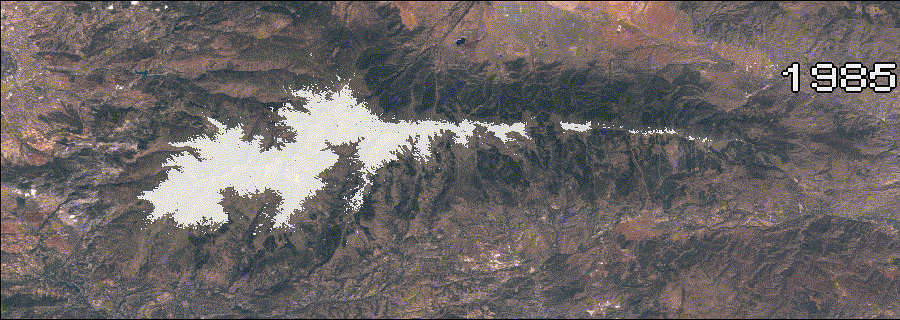Regino Zamora, Professor of Ecology and scientific coordinator of the Sierra Nevada Global Change Observatory, offers a summary of the joint effort of a large group of scientists from the University of Granada. The researchers have observed a gradual decrease in snow cover over the last 40 years in the Sierra Nevada. Using satellite images provided by Landsat-5-7-8, a NASA project that provides high quality images to monitor the earth on a large scale, they have been able to quantify the changes in snow cover. The images they have collected from each year correspond to the hydrological period that includes the months of October to May, when the possibility of finding snow in the Sierra is highest.

Zamora points out that there is evidence of a general trend towards decreasing snow cover over the last 40 years in the Sierra Nevada. Although it is true that there is great variability between years, and some have been wetter and colder than others, in general, snow cover in the Sierra has decreased during the last decades. This coincides with the increase in temperatures recorded worldwide, coupled with the irregularity and scarcity of precipitation typical of the Mediterranean climate.
"The Mediterranean climate is moving towards a semi-arid climate similar to North Africa. The fauna and flora can adapt better than we can" - Regino Zamora, Professor of Ecology -
The observatory has weather stations distributed throughout the Sierra. When analyzing and comparing data from some with similar characteristics, it is found that precipitation has decreased by 67.07% between February 1993 and February 2023.
"It's simple. It is getting hotter and hotter and we have less water. This affects the ecosystems of the Sierra Nevada, agriculture and livestock, as well as all of us who live in the city," summarizes the expert. "Flora and fauna are adapted to the environmental stress associated with the climate of the Mediterranean mountains. However, their tolerance to climate change has limits. For example, the flowering of plants is now much shorter and trees lose their leaves earlier, due to lack of water, while animals seek refuge in the wetter and cooler corners of the Sierra," he describes. "We, in cities and humanized environments, where heat islands are generated, face greater difficulties. For example, at present, practically all of Spain's hydrographic basins present a deficit for our current consumption needs in cities and countryside. We must promote the adaptation of cities, agrosystems and natural ecosystems to the new climate scenarios. The increase in aridity makes our Mediterranean climate increasingly hotter and drier, similar to North Africa," he concludes. Zamora urges readers to consult the latest report of the Intergovernmental Panel on Climate Change (IPCC) that details its evolution in recent years. He also shares the good news that researchers from the SmartEcomountains project (University of Granada-Lifewatch) are developing Remote Nevadadensis (RN), an automated system for remote sensing monitoring of the state of health of ecosystems, which will allow rapid detection of changes in the functioning of ecosystems, as well as making predictions about their evolution. This tool will be available in June.
"The melting is premature. Every year the drought is more intense and we have reached a critically dry period" - Manuel Villar, Researcher at the UGR -
Manuel Villar, researcher of the Department of Ecology of the Faculty of Sciences, warns about the effects of climate on the 74 lagoons of the Sierra. Some disappear or are altered. "The thaw is very early. Each year the drought is more intense and we have reached a critically dry period. It is catastrophic for the lagoons and the ecological flow of the rivers," he comments. "The ecosystem is suffering from water stress. The Sierra is our great reservoir and water reserve, we have to protect it," he adds.
